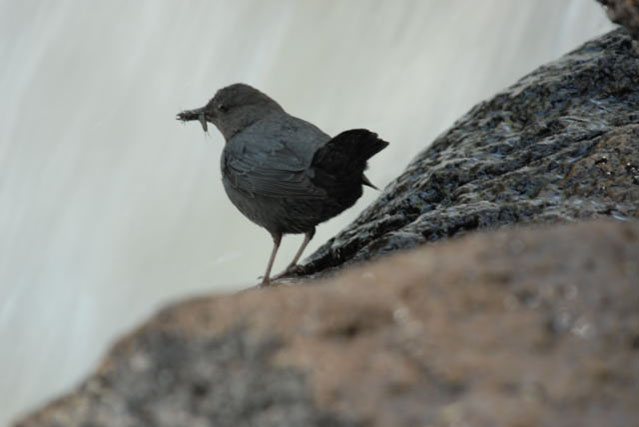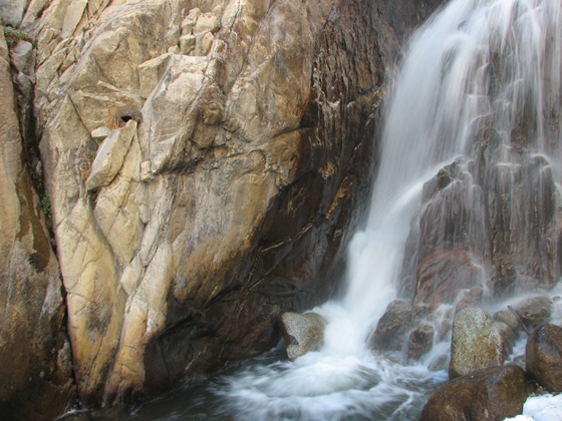
Observers: Donna & Bob Willey
Email: basina@verizon.net
Date: 05/30/2007
Time: 12:38 AM -0400
We have been a privileged observer of an American Dipper's nest site situated along a fast running stream on a rock outcropping facilitating a small waterfall. The dipper's nest is absolutely inacessible by man or beast yet, in an easy to reach spot for the dipper parents. The nest is an intricately made mound of mosses on top and grasses inside. The spray from the creek keeps the moss moist and alive looking. The eggs are laid deep within the nest and are entirely covered over by the mosses on top. There is an entrance to the nest either on the side or the bottom of the nest. According to Armstrong and O'Clair (1994) there are 5 species of dippers worldwide but only one American dipper. The American dipper spends its entire life along small, clear streams. It is a year-round resident of Alaska and can be found throughout North America along mountain streams. Dippers do not have webbed feet but they do have long toes and use their feet and legs to paddle across water. Dippers also walk along the bottom of fast moving streams using their short stubby wings to stay submerged. The major food source of the dippers are aquatic insects. Two of the most important requirements for the American dipper are clean streams and protected nesting sites. Good water clarity is a necessity for the dippers so they can see their prey. The dipper's plumage is very, very dense. The dippers have a heavy coat of down between the rows of the dipper's feathers; similar to ducks and other waterfowl (Armstrong & O'Clair, 1994). The down gives the dippers excellent insulation and with less than a 3-fold increase in their metabolism, they are able to maintain normal body temps when the air temps are as low as 40F below zero. Fascinating to note, many dippers spend their lives in one watershed. Also the dipper is highly territorial. Most of the dipper's movements are from the spring/summer nesting time which is usually upstream then moving downstream to ice free areas in the winter. The dipper's that live on the North slope in Alaska inhabit ice-free springs on the slope during the winter. The dipper's also have a very melodious song and is compared by Armstrong and O'Clair to some of the best notes of wrens and thrushes. Armstrong and O'Clair state that most streams have very few adequate nesting sites for dippers. Therefore identification and protection of dipper nesting sites may be a crucial factor in keeping dippers in a particular watershed. It has been a great joy and privilege for Bob and I to have watched the dipper's these past 5 weeks. John Muir Laws states in his field guide that the American dipper, aka Water Ouzel, was John Muirs favorite bird. I can imagine John Muir hiking the Sierra's and coming across the Ouzel running across a fast moving stream. One can surely spend hours watching this fascinating bird. Reference: Armstrong, R.H. & O'Clair, R.M. (1994). American Dipper. Retrieved May 29, 2007 from, http://www.adfg.state.ak.us/pubs/notebook/bird/dipper.php







